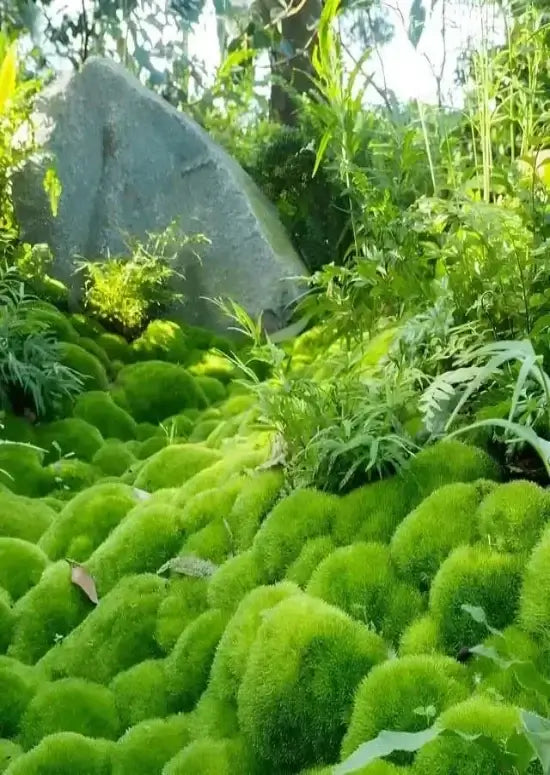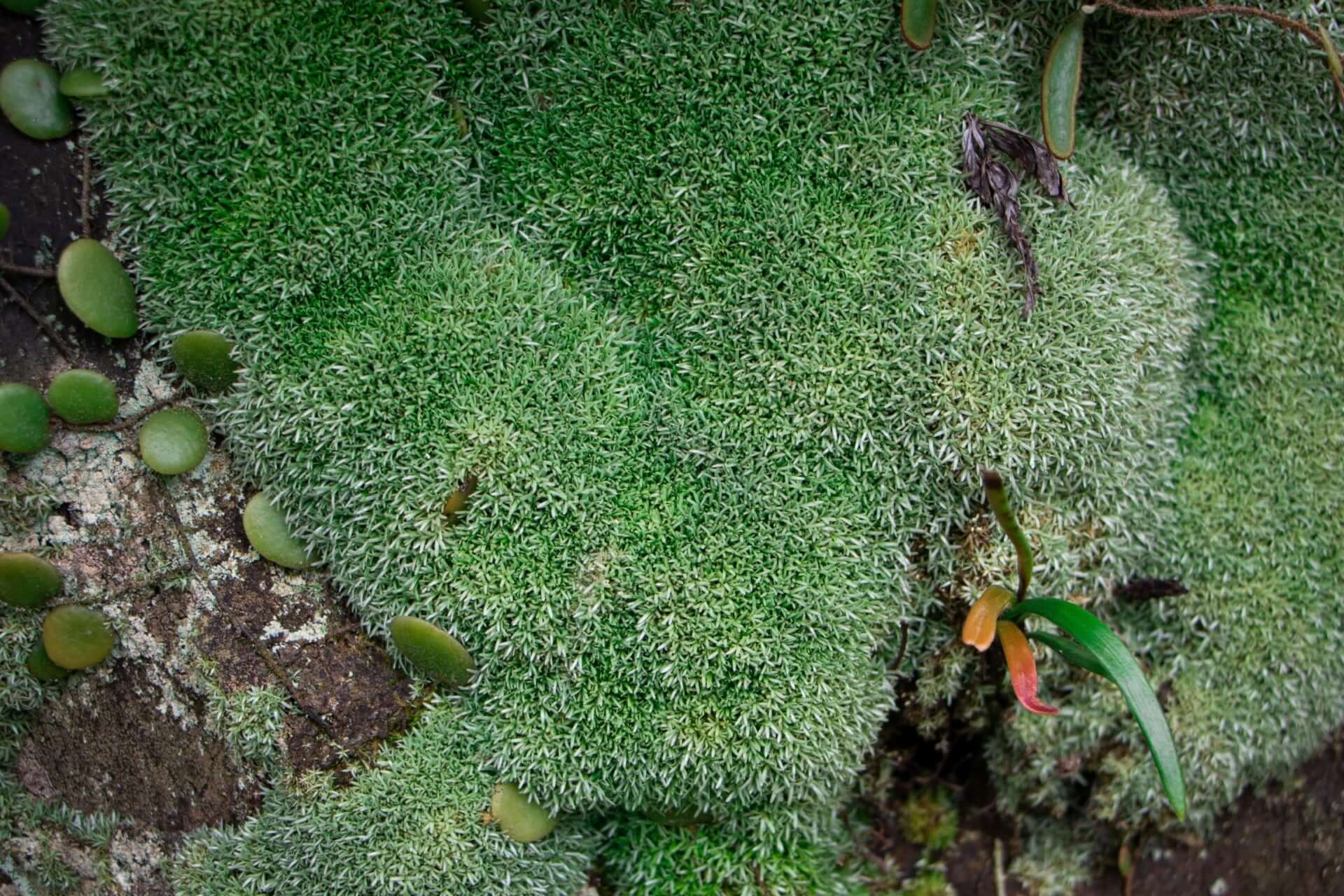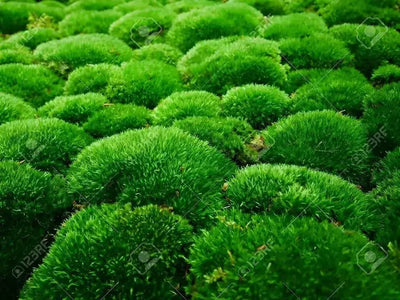Cushion moss is a versatile and enchanting plant that transforms landscapes with its soft, velvety texture and vibrant green hues. It is a favorite among gardeners and landscapers for its ability to thrive in various conditions. It is perfect for adding a lush, natural touch to gardens, rockeries, and woodland settings. The beauty of cushion moss lies in its ability to create a living carpet, turning even the most barren areas into verdant, peaceful retreats. As it grows, it forms dense, cushion-like mounds that offer an inviting, springy surface, evoking a sense of tranquility and calm.
Cushion moss is prevalent in Japanese gardens, prized for its simple elegance and ability to complement larger plants, stones, and water features. Its growth habit makes it ideal for filling gaps between rocks or paving stones, creating a natural, seamless transition between different landscape elements. Whether used in a minimalist garden design or allowed to thrive in a more naturalistic setting, cushion moss brings a unique texture and charm that is hard to match.
Is Pillow Moss the Same as Cushion Moss?
Though pillow and cushion moss are sometimes interchangeable, they are somewhat different. Pillow moss, like cushion moss, belongs to the broader category of mosses that form rounded, plush mounds. However, pillow moss usually refers to the genus Hypnum, which has a different texture and appearance than cushion moss's tight, compact growth habit. While both mosses have a soft, pillowy look, cushion moss is more renowned for its distinct mounds, often compared to pincushions due to its structure.
Cushion moss stands out for its silvery-green hue and firm, tufted growth, making it a more robust and defined presence in a garden. Pillow moss spreads more loosely, creating a softer, less structured form. Depending on the look and feel you're aiming for, either can be a good option, but cushion moss offers more definition and a compact, well-rounded shape that holds up beautifully in diverse conditions.
Is Cushion Moss Easy to Grow?
Cushion moss is relatively easy to grow, making it a go-to for novice and experienced gardeners. It thrives in shaded areas where direct sunlight is limited. A moist, acidic soil with good drainage is the key to ensuring healthy growth. Since it's a non-vascular plant, cushion moss does not rely on roots to absorb water like most other plants. Instead, it absorbs moisture through its leaves, making it ideal for environments with high humidity or regular rainfall.

To establish cushion moss in your garden, you can often transplant it by placing small clumps in the desired area. Once settled, it requires little maintenance. Unlike some moss species that can become leggy or spread uncontrollably, cushion moss tends to stay compact, which makes it ideal for contained spaces or defined garden beds. Over time, it will naturally spread to cover more ground, but its growth is slow and measured, ensuring it doesn't overwhelm other plants or take over more than you intended.
The best time to plant cushion moss is during the cooler months, such as early spring or fall, when moisture levels are naturally higher. Avoid planting in the summer heat, as too much sun and heat can cause the moss to dry out. Once established, cushion moss is relatively drought-tolerant, but keeping the soil evenly moist is always best to promote lush growth.
What Is Another Name for Cushion Moss?
Cushion moss is also commonly referred to as pincushion moss due to its resemblance to a traditional pincushion. Its compact, dome-like form and dense, spongy texture make it an excellent plant for adding structure to your garden. Other names include white cushion moss, highlighting its characteristic silvery-white undertones that appear under certain lighting conditions. The color of cushion moss can vary slightly depending on its environment, ranging from deep green to a pale, almost frosty white, especially when viewed from above.
In the wild, cushion moss often grows in patches, carpeting the forest floor in thick, lush layers. It can also be found in rock crevices, on the edges of woodland trails, or in the shadow of larger plants where sunlight struggles to reach. No matter where it grows, it maintains its signature rounded form, which makes it a delightful addition to any garden space.
Where Can I Find Pincushion Moss?
Pincushion moss, or cushion moss, is native to many temperate regions across North America, Europe, and Asia. It's most commonly found in forested areas where the soil is rich in organic matter and has plenty of shade and moisture. If you want to source pincushion moss for your garden, many nurseries and specialty plant shops carry it as part of their moss selection. Harvesting cushion moss from the wild is also possible, although it's essential to do so sustainably and by local regulations to ensure that wild populations remain healthy.
Regarding garden placement, cushion moss can be used in rock gardens, along pathways, or in shaded corners. Its low-growing habit makes it perfect for areas where you want to add greenery without the height of traditional plants. As it grows, cushion moss creates a lush, thick carpet that is visually appealing and functional, helping retain moisture in the soil and reduce erosion.
Pincushion moss can be crucial for creating a serene, meditative garden space. Its soft, springy texture invites touch, making it a favorite among gardeners who appreciate tactile plants. In addition, cushion moss can be used to line garden benches, stone steps, or even garden sculptures, offering a soft contrast to more complex surfaces.
Cushion moss also plays a role in eco-friendly gardening. Its ability to thrive without much intervention makes it a low-maintenance option for those looking to reduce their reliance on fertilizers or frequent watering. It's also a haven for small wildlife, including insects and small amphibians, who often seek shelter in dense mounds. Incorporating cushion moss into your garden can help create a more balanced, biodiverse ecosystem that benefits the local environment.
In conclusion, cushion moss is a delightful addition to any garden, offering texture, color, and natural beauty with minimal care. Its compact growth, ease of maintenance, and unique aesthetic make it an excellent choice for gardeners of all levels, whether to create a small, mossy nook or cover larger areas with a green, soft carpet. With cushion moss, the beauty of nature's softest greenery is always within reach.


